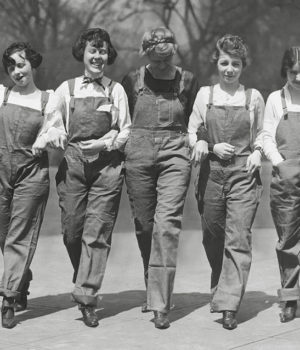Written by Jessica Shelburne
The year 2020 is noteworthy for several reasons. One being that it’s been an entire century since 1920: the beginning of arguably the most remarkable decade in United States history. During these eventful years, Americans witnessed the birth of mass culture, the Jazz Age, Prohibition, and the cultural civil war. Each of these 1920s hallmarks characterizes the decade in which economic prosperity social revolution prevailed. However, it wasn’t all flapper girls and rumrunners – the 1920s also involved the most drastic economic collapse in history, ever-present segregation, and widespread xenophobia as a result of the Red Scare.
Currently, 2020 is so much different than the 1920s as a whole that it seems impossible to even compare them. Surprisingly, though, there are similarities between the two that will make you think again. The following are three particular elements of the 1920s and 2020 that are both similar and different.
Let’s just get this out of the way…the health crises. In 1920, the flu was uncontained and spread rapidly. Infecting millions and killing hundreds of thousands, the influenza epidemic of the 1920s mirrors how today’s novel coronavirus, COVID-19, is surrounded by questions regarding treatment, emphasis on quarantining, and strained healthcare systems trying to control the situation. Furthermore, there are also many differences between 1920’s flu and 2020’s coronavirus; a major disparity being the presence and influence of media. Mass media was only just being developed and enjoyed during the 1920s, whereas today media is involved in practically every area of life. Media is responsible for the spread of both true and false information regarding our current pandemic, which is helpful for remaining informed, but harmful for misleading propagation. It is partly because of media that the health crises of 1920 and 2020 are being handled so differently. Without overwhelming updates on the epidemic available to people through multiple platforms, people in the 1920s were more ignorant about the rapid spread of the flu along with what to do about it. This could not be more different from today, as we know precisely where our situation stands, exactly what we need to do to prevent it, and how officials are handling the matter…all thanks to media.
Another similarity between the 1920s and 2020 is the economy – both in their expansion and decline. In the former and the latter, growth was made possible by good levels of inflation and employment, which allowed business to boom. However, investor sentiment in stocks, bonds, and real estate in both time periods became overzealous, which caused overvaluation, thus creating a sort of economic ‘bubble’ that would eventually pop. In 1929, the bubble burst and initiated the crash, leading to extensive layoffs, bankruptcy, and widespread business closures. We are seeing similar events happen now, which is expedited or worsened by much more advanced methods of policing the economy and fighting the recession that did not exist in the 1920s, such as: high-speed transactions, vastly evolved technology, and a more experienced and knowledgeable Federal Reserve. As technology expedites the processes set in place that allow for economies to flow fluidly, we can see the consequences of both fiscal and monetary policy have exponential implementations.
The sexual revolution, particularly for women, was a defining feature of the Roaring Twenties. Young women made a collective decision to break conventional, repressive standards and reinvent themselves by cutting their hair, burning their bras, and adopted a more fashionable, non-traditional wardrobe. In addition to these personal choices, women gained unprecedented freedoms such as the right to vote, job opportunities, and more contraceptive options. Currently, society has made considerable strides to achieve gender equality, though, patriarchal practices still function within government, business, and plenty other areas of human interaction, similar to the 1920s. Women have taken it upon themselves yet again to persevere in the fight for equality by resisting oppression and drawing attention to areas where they are undermined and treated unfairly. Social feminist movements happened in both the 1920s and 2020, but the methods by which they are fueled and the general goals which they aim to attain are different. The 1920s mainly saw women just trying to get out of the house, join the workforce, and express themselves through rhetoric and physical appearance. There were not many outlets to assist women in acquiring their freedoms besides getting out, showing up, and sticking it to the man until they got what they deserved. Today, women still get out and show up (think Women’s March), but mass media platforms make it much more possible to advocate and promote their cause.
History tends to repeat itself. We are currently witnessing reflections of past events today at an increasing rate. Not all similarities mean regression and not all differences mean progress. Every individual is responsible for societal growth, and we can achieve this by treating one another fairly, practicing sensible financial judgement, and…washing our hands.




